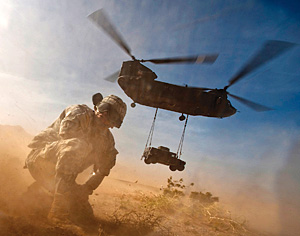INDIAN ARMED FORCES CHIEFS ON OUR RELENTLESS AND FOCUSED PUBLISHING EFFORTS

The insightful articles, inspiring narrations and analytical perspectives presented by the Editorial Team, establish an alluring connect with the reader. My compliments and best wishes to SP Guide Publications.

"Over the past 60 years, the growth of SP Guide Publications has mirrored the rising stature of Indian Navy. Its well-researched and informative magazines on Defence and Aerospace sector have served to shape an educated opinion of our military personnel, policy makers and the public alike. I wish SP's Publication team continued success, fair winds and following seas in all future endeavour!"

Since, its inception in 1964, SP Guide Publications has consistently demonstrated commitment to high-quality journalism in the aerospace and defence sectors, earning a well-deserved reputation as Asia's largest media house in this domain. I wish SP Guide Publications continued success in its pursuit of excellence.
- Indian Air Force Aims for Full Indigenous Inventory by 2047 — Air Chief Marshal A.P. Singh
- General Upendra Dwivedi takes over as the Chief of the Army Staff
- Rajnath Singh assumes charge as Defence Minister for the second consecutive term
- Admiral Dinesh K. Tripathi assumes Command of the Indian Navy as 26th Chief of the Naval Staff
- Prime Minister witnesses 'Bharat Shakti' – a Tri-Services Firing and Manoeuvre Exercise in Pokhran, Rajasthan
BAE Systems new helicopter landing system

During the Defence and Security Equipment International (DSEi) exhibition in London, BAE Systems showcased its Brownout Landing Aid System Technology (BLAST), a situational awareness solution that helps helicopter pilots see in degraded visual environments (DVE).
BAE Systems utilised “off-the-shelf” technology garnered from alreadyfielded systems in developing BLAST, which addresses the urgent need for rotorcraft operation in DVE, such as brownout, fog and smoke. Helicopter brownout occurs when a pilot loses visual references due to dust or sand recirculating during take-off or landing, which is a major problem in arid desert terrain. Brownout poses a major safety risk to helicopter operations in desert operations, which the new BLAST system could solve. As allied forces have investigated reducing the high accident rates caused by poor visibility when DVE conditions exist, they have realised this phenomenon will not be resolved through training alone but is one that requires a technology solution.
BAE Systems successfully tested BLAST during a two-week campaign in April 2011 at the Yuma Proving Grounds in Arizona. Fitted on a Bell UH-1 “Huey” test-bed helicopter, the system demonstrated effective real-time 3-D visual landing zone representation with overlaid flight symbology information to a pilot in DVE conditions. The flight symbology provides all relevant flight critical information, allowing the pilot to easily judge the height, speed, and drift of the aircraft.
“The system combines proven millimetre wave (MMW) technology with advanced situational awareness capabilities, and provides safe-flight capabilities for front-line helicopter crews in diminished visibility conditions such as brownouts, whiteouts, darkness and adverse weather, helping the pilot achieve mission success,” said Paul Cooke, Business Development Director of defence avionics for BAE Systems.
BLAST is at a technology readiness level (TRL) 6 as a prototype DVE System demonstrated in a relevant environment. The system’s light weight, flexible architecture and ruggedised features allow it to be installed on both new and legacy helicopter models. The strong, versatile nature of this technology allows all platforms requiring real-time 3D situational awareness in DVE to benefit from this solution.





